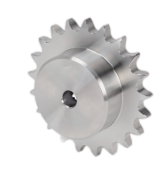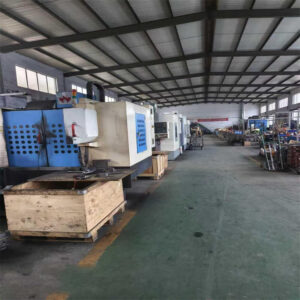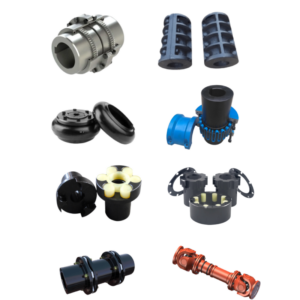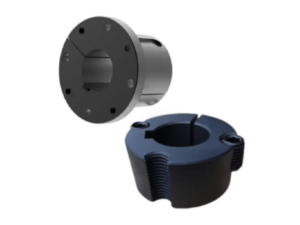Before diving into the specifics, here is a concise overview of sprockets: Sprockets are profiled wheels with teeth designed to engage chains, belts or perforated materials, enabling precise power transmission without slippage. They come in various types—single-strand, multi-strand, flanged and non-flanged—crafted from materials ranging from carbon steel to advanced polymers, each chosen for strength, corrosion resistance and application requirements. Key design factors include tooth count, pitch diameter, material selection, lubrication and alignment, all of which influence efficiency, wear life and mechanical advantage. Sprockets find widespread use in bicycles, motorcycles, conveyors, tracked vehicles, film transport and industrial machinery, with recent innovations focusing on modular designs, self-lubricating composites, smart sensors and additive manufacturing techniques.
Definition and Fundamental Function
A sprocket is a profiled wheel with radial teeth that mesh with the links of a chain or perforations in a material, transmitting rotary motion without slippage Wikipedia. Unlike gears, sprockets never mesh directly with one another, and unlike smooth pulleys, they have teeth to engage chains or timing belts Wikipedia. The simplest example is the bicycle sprocket: a large chainwheel on the pedal shaft drives a chain that turns a smaller sprocket on the rear wheel axle, converting human pedaling into forward motion Wikipedia.
Types of Sprockets
Single- and Multi-Strand Sprockets
Single-strand sprockets have one row of teeth engaging a single chain, while multi-strand sprockets feature two or more parallel rows for higher load capacity and smoother power delivery MDS of Michigan.
Flanged vs. Non-Flanged
Most industrial sprockets lack flanges, but timing-belt sprockets often include flanges to keep belts centered under high-speed conditions Wikipedia.
Specialized Forms
Shear-pin sprockets incorporate a designed-to-fail pin that protects machinery by shearing under overload, while segmented or modular sprockets allow individual teeth to be replaced without discarding the entire wheel gear-sprocket.com.
Materials and Manufacturing
Common Materials
- Carbon Steel (1045 Standard): Offers excellent strength, wear resistance and cost-effectiveness for general-purpose applications nitrochain.com.
- Stainless Steel (201, 304, 316): Used in corrosive or hygienic environments; 304 is the most prevalent grade for its balance of corrosion resistance and strength Wuxi Amc Power Machinery Co., Ltd..
- Cast Iron: Economical with good wear resistance, often used for flat-wire-belt sprockets keystonemfg.com.
- Aluminum & Alloys: Lightweight options for weight-sensitive applications, though less wear-resistant than steel Diversified Specialties.
- Plastics & Composites: Provide corrosion resistance and self-lubrication; advanced composites can incorporate solid lubricants for maintenance-free operation Sprockets and Gears Manufacturer.
Surface Treatments and Coatings
Corrosion-resistant coatings (e.g., nickel, cadmium plating) and heat treatments (tooth hardening) extend sprocket life in harsh environments martinsprocket.com.
Design Considerations
Tooth Count and Pitch Diameter
The number of teeth (Z) and chain pitch determine the pitch diameter, influencing articulation angle and wear: fewer teeth increase articulation and wear, while more teeth reduce stress per link renoldjeffrey.com.
Load, Speed and Lubrication
Design must account for transmitted torque, chain speed and lubrication regime. Poor lubrication dramatically accelerates wear, while correct lubricant selection can yield optimal service life renoldjeffrey.com.
Alignment and Tensioning
Accurate sprocket alignment and the ability to re-tension compensate for chain elongation, preventing vibration, uneven wear and premature failure wippermann.com.
Mechanical Advantage
The sprocket ratio (driven teeth ÷ drive teeth) defines mechanical advantage in chain drives. Ideal efficiency approaches 95%, though real systems lose power to friction and wear WikipediaWikipedia.
Applications
- Bicycles & Motorcycles: Derailleur systems use multiple sprockets for variable gear ratios; final-drive sprocket changes affect acceleration and top speed Wikipedia.
- Tracked Vehicles: Drive sprockets engage caterpillar tracks, positioned at front, rear or both, to propel heavy machinery and tanks Wikipedia.
- Film & Printing: Film-transport sprockets engage perforations (“perfs”) to advance motion-picture and printing films with precision; perforation pitch is critical for registration accuracy Wikipedia.
- Industrial Machinery: Conveyor systems, packaging, agricultural equipment and robotics rely on sprockets for positive, slip-free power transmission Sprockets and Gears Manufacturer.
Maintenance and Best Practices
Regular inspection for tooth wear, chain elongation and corrosion is essential. Predictive maintenance via sensor-equipped “smart sprockets” can monitor temperature, vibration and wear in real-time, minimizing downtime Sprockets and Gears Manufacturer. Use standard tooth counts and ANSI-compliant profiles (ANSI B29.1 Type II) for interchangeability and reliability martinsprocket.com. Replace worn chains and sprockets in pairs to avoid accelerated wear on new components.
Innovations and Future Trends
Modular and Self-Lubricating Designs
Interchangeable tooth segments and composite materials with embedded lubricants reduce maintenance time and enhance longevity Sprockets and Gears Manufacturer.
Additive Manufacturing (3D Printing)
3D-printed sprockets enable rapid prototyping and custom geometries, lowering costs and lead times for bespoke applications Market Research Intellect.
Smart Sprocket Systems
Integration of IoT sensors for condition monitoring and predictive analytics is emerging, allowing real-time performance tracking and maintenance alerts Sprockets and Gears Manufacturer.
Advanced Materials
Development of high-strength alloys (titanium, specialty steels) and wear-resistant ceramics expands sprocket use in extreme environments, from aerospace to renewable energy progressivesteels.com.
Through careful material selection, precise design and modern innovations—such as modular construction, self-lubricating composites and smart monitoring—sprockets continue to evolve, meeting the demands of today’s high-performance mechanical systems while promising even greater efficiencies in the future.







